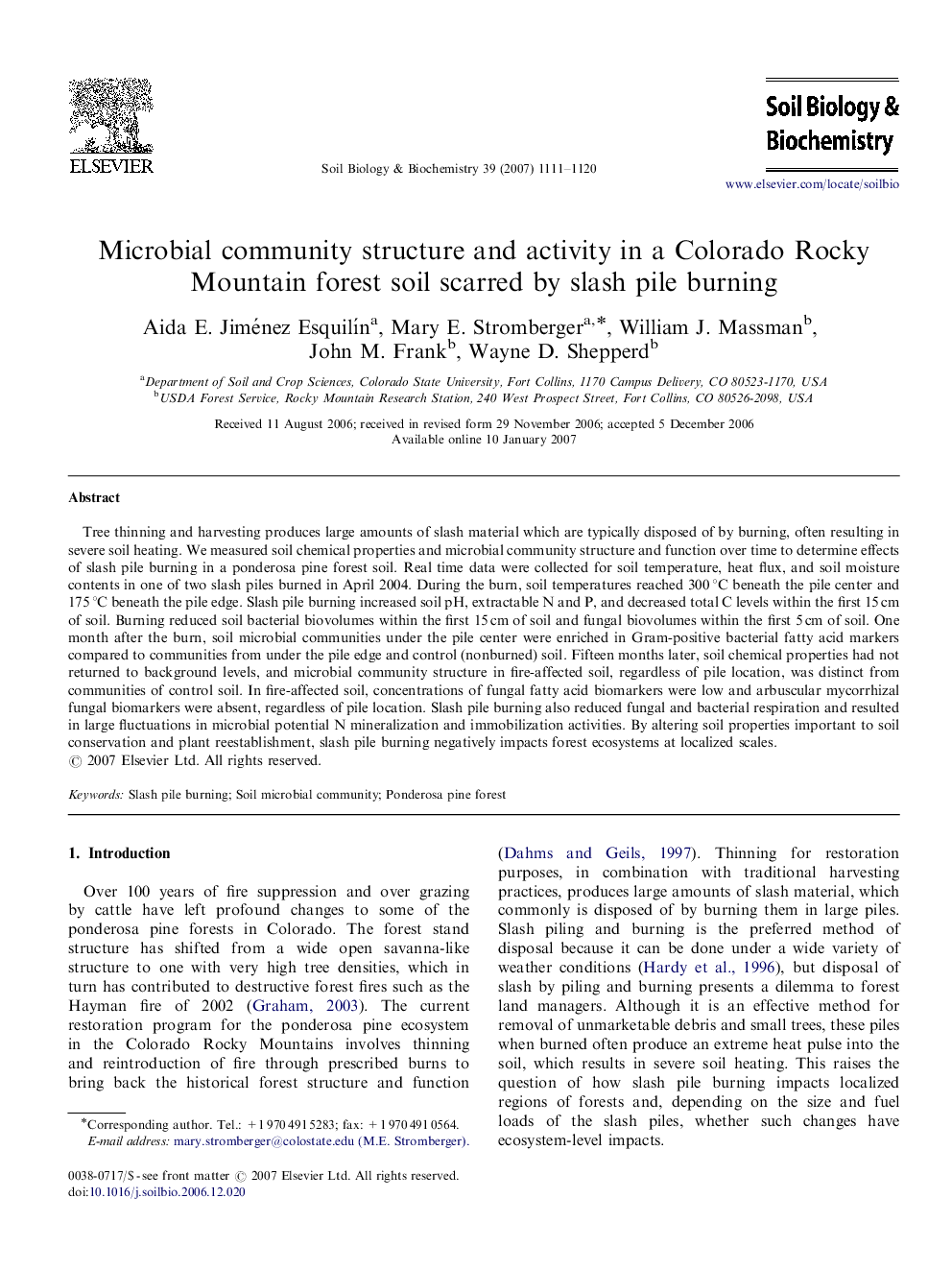| Article ID | Journal | Published Year | Pages | File Type |
|---|---|---|---|---|
| 2026418 | Soil Biology and Biochemistry | 2007 | 10 Pages |
Tree thinning and harvesting produces large amounts of slash material which are typically disposed of by burning, often resulting in severe soil heating. We measured soil chemical properties and microbial community structure and function over time to determine effects of slash pile burning in a ponderosa pine forest soil. Real time data were collected for soil temperature, heat flux, and soil moisture contents in one of two slash piles burned in April 2004. During the burn, soil temperatures reached 300 °C beneath the pile center and 175 °C beneath the pile edge. Slash pile burning increased soil pH, extractable N and P, and decreased total C levels within the first 15 cm of soil. Burning reduced soil bacterial biovolumes within the first 15 cm of soil and fungal biovolumes within the first 5 cm of soil. One month after the burn, soil microbial communities under the pile center were enriched in Gram-positive bacterial fatty acid markers compared to communities from under the pile edge and control (nonburned) soil. Fifteen months later, soil chemical properties had not returned to background levels, and microbial community structure in fire-affected soil, regardless of pile location, was distinct from communities of control soil. In fire-affected soil, concentrations of fungal fatty acid biomarkers were low and arbuscular mycorrhizal fungal biomarkers were absent, regardless of pile location. Slash pile burning also reduced fungal and bacterial respiration and resulted in large fluctuations in microbial potential N mineralization and immobilization activities. By altering soil properties important to soil conservation and plant reestablishment, slash pile burning negatively impacts forest ecosystems at localized scales.
